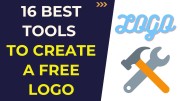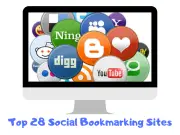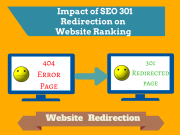Step by Step on how to Increase brand Awareness for New Blog Post

Every time you write a blog post, it's one more indexed page on your website, which also creates an opportunity to show up in the search engines and drive traffic to your website. Blogging is still relevant in today’s digital marketing environment and an easy or inexpensive way to enhance your marketing efforts.
"Blogging means the way of creating short-form content which is posted to your website's "blog" known as the blog post." Your blog can talk about different topics whether it's technical, marketing, new technology and so on. Whatever the blogs maybe but it should be on peoples interests looking for your products or services that help your business to go in front of them.
According to the study, more than 57% of companies who have a blog reported acquiring a customer from their blog. And 81% of businesses say that their business blog is useful to drive traffic and generate leads for their business.
Whether you are a small business or a multinational company, blogging is integral to your online content marketing strategy because:
- It drives traffic to your website
- It increases your SEO and Page Ranking
- It enhances your brand
- It attracts prospective customers
- It converts traffic into potential leads
Having a blog is not enough as businesses need to spend time on creating a blogging strategy for long-term success. For creating a blog strategy, you need to understand five important things as its purpose, your prospective customers, competitors, targeted keywords, and distribution & promotion.
When building blog awareness, your greatest weapon is regular exposure. You want your blog post to show up where your target audience hangs out online. It should place you in their field of view so they can approach you willingly when they become interested.
Increasing awareness of a new blog post help consumers become familiar with your products or services. It also earns you their trust and loyalty that translates to more sales and a host of other benefits for your business.
What is brand awareness?
Brand awareness is making your customers familiar with the image or qualities of a specific brand of goods and services. It’s basically the level of consumer consciousness of a company. Brand awareness measures not just your customer’s ability to recognize a brand’s image, but also associate it with a certain company’s service or product. Brand awareness is a real asset when the competition is high. Brand awareness which is usually associated with a product is expressed as a percentage of the target market. It is the primary goal of advertising when a product has just been launched.
Why brand awareness?
- Brand awareness is very important when you launch new products and services. It also helps consumers distinguish between companies.
- Brand awareness encourages repeat purchases and your market share goes up. This means incremental sales.
- Brand awareness is crucial if you are marketing products through social media sites like Facebook.
- Brand awareness encourages customer loyalty and increased sales through word of mouth.
- Brand awareness is important as your company gets recognized and customers get to know of it,
- It’s important for future business as it increases business value, and your company gains more space in the industry.
Let’s have an example of brand awareness:
You may have heard, “I want a Kleenex.” You know this means “I need a tissue.” This is brand awareness. When you go to a restaurant and need a drink, you say, “I want a coke.” This means you want a cola.
There are many ways to increase awareness for your new blog post but some selective steps here mentioned below can get your blogs in front of the right audience
Improve page load speed and technical issues:
When it comes to brand awareness, speed matters. As the world goes digital, attention spans reduce. People demand what they want and don’t like being kept waiting. Webpage loading speed impacts the bottom line (profits).
If your webpage loads slowly, people leave and go elsewhere. This is a loss of traffic and conversion rates suffer as bounce rates rise. Slow loading pages are a big no, as they have a major impact on SEO. Google uses page speed as a decisive factor when calculating page rankings. If webpage loading speed is slow, take these corrective measures.
Find out how fast pages load: Google offers PageSpeed Insights to find out page speed. It's really easy to use with a color-coded scale to show your page speed score.
- Optimize images: Oversized images are a major drag on image speed. Save time by compressing images and then adding them to the site. Use the “Save for Web” option to adjust the file size and also maintain optimum quality. Use TinyPNG and JPEGmini to compress images.
- Use Gzip compression: Gzip compression reduces file size without compromising on quality. Use it with text files like HTML, Javascript, and CSS.
- Use content distribution networks: Content Distribution Networks or CDNs positively impact page loading speed. These are server networks that share the load of delivering content. CDNs help store your site on numerous servers across the World. The users can easily access servers, close to where they are. This speeds up page loading time on laptops and mobiles.
- Reduce redirects: Redirects are a great way to lead customers to newly created pages that replace existing ones. You don’t lose link juice (This is preserving value by having a high ranking site linked to the original page). However, redirects slow down your site. Redirects add links in the chain which the browser must pass through. This reduces page loading speed.
- Cache the latest versions of pages: Install plug-ins which cache the latest versions of pages. Browsers don’t have to generate a page each time its shown to a visitor.
Step 1) Find and Engage your audience with targeted content
You must engage the targeted audience with high-quality content. The first step is to visualize your reader and give him/her what they want. If you are running a blog about machine tools, your audience would most probably be male, around 30-35 years with income around Rs 25,000-45,000. He might even be planning to start his own business. Put yourself in the customer's shoes and prepare content for him.
Put your customer first and income second. Help him solve problems and offer good, useful content. Set yourself apart from the rest. Always focus on benefits and not features when promoting your products to the target audience. Emphasize on urgency by saying this product is available for a limited time. Insert a call to action where the audience gets to know what must be done next.
Understand what your audience wants through surveys and polls. Use google analytics to know the age of your visitors, their location and whether they access your site through desktop or mobile. Use google analytics as a weapon. If the targeted audience is engaged through content promoted on social media and there’s a surge in traffic, that’s where the targeted audience hangs out.
Use Facebook Insights and Twitter analytics dashboard to find where the audience is active. You get to know the time the audience is active and can engage them successfully. Use apps like Follower
Wonk, Coschedule, Buffer, Hootsuite, and Buzzsumo to monitor activity on social media. Use google analytics to track your individual posts and check performance. Target the audience through email marketing and get feedback on your work. Respond to any messages or comments of the target audience. Check what your competition is up to and finally use social listening tools like Mention to see what content is causing a buzz on social media.
- Define your target audience
- Understand your target market
- Identify groups to reach larger audiences
- Choose tips, tactics, and strategies for gathering audience data.
- Create content that connects to their needs and interests
Step 2) Participate in Online Communities to Locate Your Audience
Always focus on the top few groups. Make these 3 top communities and forums to monitor and participate in, and develop better and stronger relationships. Always take time to respond to conversations and interactions which is good social etiquette and helps your business. Show-off your knowledge and not doing a follow-up is a wasted opportunity.
Never spam groups with links. Focus on sharing knowledge and building brand credibility. To build credibility participate in discussions with high engagement. Look for discussions with the highest number of comments. Participating in such conversations increases exposure. Invest your time and enjoy great rewards for good comments in terms of brand recognition.
Make your efforts stand out and for this consistency is the key. Add value to a conversation to stand out as a knowledgeable resource. Comment on a thread each day, interact with a specific set of users or showcase your expertise.
- Figure out your audience you are looking for
- Use social spaces like blogs, forums, websites, and social media communities
- Create an account and start participating in communicating with the benefits
- Ask the right type of questions with specific interests
- Build relationships
Step 3) Write SEO Friendly Blog Post
- Focus on long-tail keywords
- Include keywords in title, headers, body, URL and meta description
- Make your blog fully responsive and mobile-friendly
- Write 2000-3000 words for every article.
- Optimize your meta descriptions
- Give internal links
Step 4) Use Social Media Sites to Share Your Blog and Find new Connections
If you want social media to be effective, make sure your name and message are right in front of your followers. Make sure the target audience is kept informed on the latest topics of your business. Understand that what works on Twitter may not work on Facebook or Instagram. Study social media networks and fit your posts to match needs.
Have social media follow buttons on every page of your website. Find influencers and share their content with your followers. Promote newsletters and email lists on social media. Use hashtags that spread like lightening on social media. Send real content and not just a bunch of #s. Have social share links on your blog so that visitors can easily share your content. Always post relevant content to the targeted audience. Social media and website stats help determine what’s popular.
- Register your account on Facebook, Twitter, LinkedIn, Google+, etc.
- Create profiles with pictures and good descriptions
- Connect with the users
- Share your content
- Interact with other blog communities
Step 5) Add Images, Infographics, videos, charts, slides, and Illustrations
Infographics help present content visually. Our brain is known to process images 60,000 times faster than text. With infographics, you can present data in charts with interesting images and graphics. This captures your user's attention and leads to better brand recall.
- Get together visual content which sends a compelling message in a simple manner. You would get more shares on social media.
- Infographics help increase the time spent by visitors on your page, This increases the number of visitors to your website. You get more shares and backlinks.
- If you create compelling infographics, the information stays in the visitor's mind for a really long time.
- Infographics help present complex topics in an easy way. It shows your expertise in the subject.
- Infographics can be changed across formats and tailor-made to suit different platforms. Infographics and videos are an excellent way to present content.
Step 6) Guest blog on other sites
Many bloggers prefer publishing blogs on their own sites. They don’t want to waste time creating content for other people's websites. Count this as an opportunity lost. Guest blogs are a great way of driving traffic to your website.
Before writing guest blogs and guest posts ask this question, Is the website related to your brand. Well, if it's not related, it must be close enough.
Let's have an example. You have an eCommerce brand selling sunglasses. The guest posts need not stick just to sunglasses. You can post guest blogs on Fashion websites. The work doesn’t end here. If your target audience is males over 30 years, there’s no point in writing guest blogs on fashion websites that target 30-year-old females.
Don’t wait to be contacted to write guest blogs for websites. Do your research and pick websites to write guest blogs that fit your brand. Do check if the website has too many ads. They affect the credibility of the website. To check for credible websites to write guest blogs pick big names in your industry. It's safe to say they have loads of traffic. Check the posting frequency and the comments section. If only one new post is made on the blog each month, you know the website has less traffic. Look for plenty of posts made on the blog which means lots of traffic.
When you write guest blogs, don’t sacrifice on quality. This is the place to show off unique skills. This is not your blog where the audience already knows you. The guest posts must be an accurate reflection of what’s in your own blog.
Add links to your own website. This should be natural hyperlinks within the content of your posts. People will click and come to your website and increase traffic. Last but not least, politely ask the brand to share your guest posts on their social media pages and with email subscribers. People will see your guest posts and this fetches more traffic to your website.
Step 7) Partner with Influencers
More than 81% of brands use influencer marketing. Influencers have many followers mostly youngsters. These youngsters make lifestyle choices on the lines of their influencers. This shows that influencers have a big role to play in brand awareness.
Influencers have the power to reach across to a wider audience. They can develop trust and loyalty in followers. Influencer marketing brings credibility to your brand.
Influencers have many followers and are heavily tracked on social media. If the influencer collaborates with your brand through an impactful campaign, there could be big business for you.
- Always partner with the right influencers. Look for influencers who have strong social media engagement and those whom you like to associate with.
- Discuss and build an agreement for collaboration with influencers. Check the period of partnership and terms for commitment. Reward your influencers based on certain set criteria. Both parties must sign the agreement.
- Make the influencers your brand ambassadors. Work with influencers to garner marketing ideas from them.
- Influencers have the power to influence an audience, They make sure their followers share your content across social media.
Step 8) Do bookmarking submission:
You can share articles, videos, blogs, and images on social bookmarking websites. This is a great way to search, collect and organize webpages that interests you. This can be done using virtual bookmarks. With social media, you can do social bookmarking which helps build quality backlinks.
You can use social bookmarking sites like Twitter and Pinterest. You can submit links to images and articles. Easily generate a list of bookmarks by upvoting or downvoting content. Some social bookmarking sites allow you to tag them with any keywords. Using MetaFilter you can even contribute a link or make a comment. You can submit links or any content to social bookmarking sites and build link juice. For search engines like google, links are votes by other websites that show your pages as extremely valuable and worth promoting.
There are some other ways to increase awareness of your blog post are:
- Write a good title and a great introduction
- Build a large following on Twitter - share, and link to your blog
- Increase your likes on Facebook - link to your blog and share it
- Build an email subscriber list from day one
- Register on LinkedIn and have a sharing button
- Include a Google+ sharing button
- Pinterest sharing button can be useful for sharing your content
- Provide offers, freebies to the people to subscribe to your blog
- Include multiple locations for people to subscribe
- Include an RSS feed option
- Link to your blog on your YouTube videos and channel
- Guest blog on larger blogs in your industry
- Comment on other bloggers posts
- Reply to comments on your blog posts
- Connect with the influential bloggers in your niche and category
- Make your blog mobile-friendly
- Optimize for search engines
- Write sub-titles with keywords in posts for SEO purpose
- Include keywords in images to make search friendly
- Publish new blogs regularly (at least once a week)
- Include videos, images, slides, podcasts, etc.
Conclusion
Remember it's only by writing and publishing regularly that transform your blog into something remarkable. Increasing awareness for your new blog post takes a combination of well-optimized website, great content, strong promotion, and a supportive community. Building a strong base of readers and supporters takes time and patience which is must for every one.





